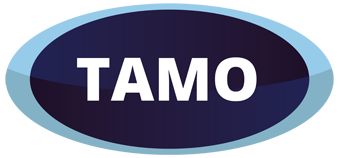Beginning in 2010, STFC’s Rutherford Appleton Laboratory has been home to ‘Cryogenic Cluster Day’ each September. This short introduction explains how Cluster Day came about, and provides an insight to the growing and increasingly valuable archive of presentations and poster material from these events, with links to suppliers who took part in the trade shows.
Cryogenics is a classic enabling technology, in which the UK and STFC – has exceptional strength. Not many people experience the extremely low temperatures (literally as low as you can go) involved in cryogenics, though many things in their lives depend on cryogenics. Gases turn to liquids at low temperature, molecular vibration is reduced in lower energy states; low temperatures allow superconductors to work too. Phenomena like these in turn enable a plethora of applications. In addition to bringing fish fingers and frozen peas to the kitchen, gas in the cooker may have come from as far as Qatar in liquefied form aboard refrigerated ship. Liquefied fuels are also used in space travel. Much science involves low temperatures – you can see better inside molecular structures and capture sharper images from faint signals, so cryogenics helps astronomers, helps bring us the weather forecast, and even plays a part in Cricket, in the cryocooled ‘Hotspot’ cameras. Superconducting magnets rely on cryogenics and are crucial to operation of big science facilities like accelerators and synchrotrons. They also make MRI scanners work, with liquid helium, while elsewhere in hospitals, much warmer (but still very cold) liquid nitrogen enables preservation of blood, semen, tissue, stem cells and organs.
The UK has a particularly strong Cryogenic Community, centred around Oxfordshire, emanating from the interaction of Oxford University and STFC’s Rutherford Appleton Laboratory [RAL] and the cascade of surrounding enterprise over many years. Oxfordshire’s position as the world’s leading manufacturer of MRI scanner magnets today can be traced back to pioneering work at RAL in Superconducting Magnets and Oxford Instruments, the first spinout company from the University. Cryocooler technology developed by the University and RAL has made it far and away the most successful flown in space. A Cryogenic Infrastructure has built up around these centres, comprising everything from global corporations to sought-after, one-man specialists and every tier in between. This exceptional community made it an obvious choice for a bid in the UK Government’s ‘National Cluster Mark Competition’ in 2010 – and from there, the British ‘Cryogenic Cluster’ was formed, subsequently synchronising its membership with the British Cryogenics Council. CCD1, the first ‘Cryogenic Cluster Day’ was held in 2010, to bring the cryogenic community together and to showcase its formidable strengths, with RAL providing a natural home for this event.
Cryogenic Cluster Day has always comprised a mix of seminar, trade show and lab visits, free-to-attend for delegates. At CCD4 in 2013, a Poster Session was added as a fourth element at the suggestion of one of the Universities. Andrew Taylor, Head of RAL, opened CCD1. The talks began with MRI Scanners and ended with Superconducting Generators for Offshore Wind Turbines (another area in which UK leads the world). CCD2 began with back-to-back talks by Sir Martin Wood, founder of Oxford Instruments, and Professor Harry Jones from the Clarendon Laboratory and Chairman of the British Cryogenics Council – no one who heard their reminiscences over the past 50 years could have been in any doubt why Oxfordshire is such a special place for Cryogenics in the World. Attendance of CCD2 increased over CCD1 and has continued to grow year on year. International interest has increased too, with attendees from Europe, America and even India and New Zealand. Professor ter Brake from the University of Twente in the Netherlands and incoming Chairman of the International Cryogenic Engineering Conference spoke first at CCD3, followed by Klaas Kunze from BMW on Cryo-Compressed Hydrogen, reflecting that increasingly international flavour – which continued in CCD4, with exhibitors from Austria, Germany and America as well as the UK and Oxfordshire. The new Poster Session at CCD4 made use of the splendid Atrium in the Diamond Light Source. Another novel part of the CCD4 programme was a highly acclaimed visit to the Mouse Facility at MRC-Harwell, complementing other visits to Diamond, RAL Space and the Cryogenic Labs.
Cryogenic Cluster Day has established itself as the best gathering of the Cryogenic Community in the British Cryogenics Calendar – CCD5 takes place on Friday September 19th 2014 please check back for further details.
